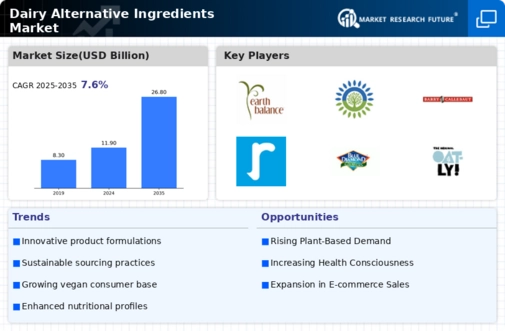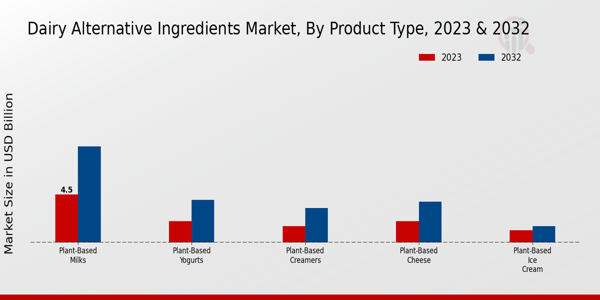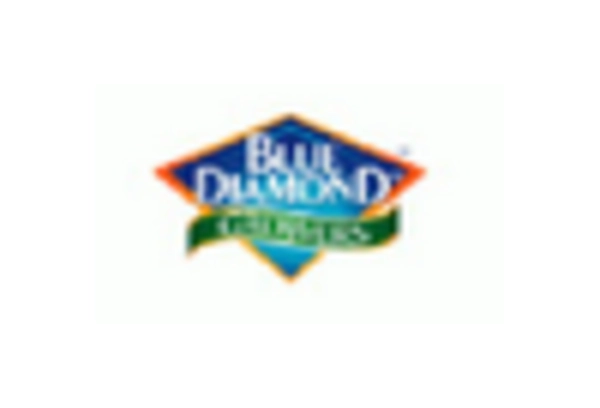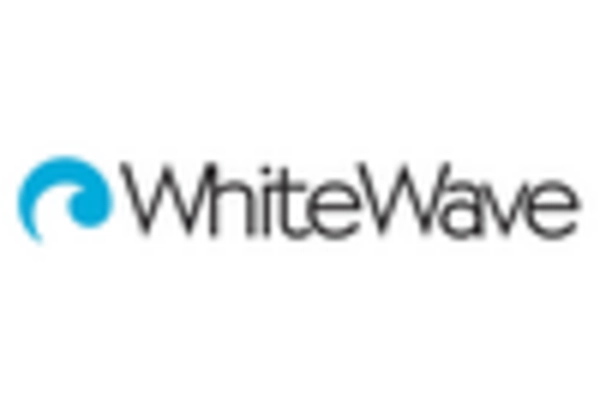Health Consciousness and Dietary Trends
The Dairy Alternative Ingredients Market is significantly influenced by the rising health consciousness among consumers. As individuals become more aware of the nutritional implications of their food choices, there is a marked shift towards plant-based diets that are perceived as healthier. Research indicates that nearly 40% of consumers are actively seeking dairy alternatives due to health-related reasons, such as lower cholesterol levels and reduced calorie intake. This trend is further supported by the increasing prevalence of dietary restrictions, including lactose intolerance and veganism. Consequently, the Dairy Alternative Ingredients Market is poised for growth as more consumers opt for alternatives that align with their health goals, thereby driving demand for innovative and nutritious dairy substitutes.
Regulatory Support and Industry Standards
The Dairy Alternative Ingredients Market is also benefiting from increasing regulatory support and the establishment of industry standards. Governments and regulatory bodies are recognizing the potential health benefits of dairy alternatives and are implementing policies that encourage their production and consumption. For instance, some regions have introduced labeling regulations that promote transparency in ingredient sourcing and nutritional content. This regulatory framework not only fosters consumer trust but also encourages manufacturers to adhere to higher quality standards. As a result, the Dairy Alternative Ingredients Market is likely to see enhanced credibility and growth, as consumers feel more confident in choosing dairy alternatives that meet established health and safety guidelines.
Sustainability and Environmental Concerns
Sustainability is becoming a cornerstone of consumer decision-making in the Dairy Alternative Ingredients Market. As environmental awareness grows, consumers are increasingly favoring products that are perceived as eco-friendly and sustainable. The dairy industry is often criticized for its environmental impact, including greenhouse gas emissions and water usage. In contrast, plant-based alternatives are viewed as more sustainable options. Recent studies suggest that producing almond milk requires significantly less water compared to traditional dairy production. This shift towards sustainability is likely to propel the Dairy Alternative Ingredients Market forward, as brands that prioritize ethical sourcing and environmentally friendly practices are more likely to resonate with consumers, thereby enhancing their market share.
Innovations in Dairy Alternative Ingredients
Innovation plays a pivotal role in the Dairy Alternative Ingredients Market, as companies strive to enhance the taste, texture, and nutritional profile of their products. Advances in food technology have led to the development of new ingredients derived from nuts, seeds, and legumes, which are increasingly being utilized to create dairy-like textures and flavors. For instance, the introduction of oat milk and almond-based yogurts has gained substantial traction among consumers. The market is expected to witness a significant increase in product launches, with an estimated 20% rise in new dairy alternative products over the next few years. This continuous innovation not only caters to evolving consumer preferences but also strengthens the competitive landscape of the Dairy Alternative Ingredients Market.
Increasing Consumer Demand for Dairy Alternatives
The Dairy Alternative Ingredients Market is experiencing a notable surge in consumer demand for plant-based alternatives to traditional dairy products. This trend is driven by a growing awareness of health benefits associated with plant-based diets, as well as an increasing number of lactose-intolerant individuals. Recent data indicates that the market for dairy alternatives is projected to reach approximately 30 billion USD by 2026, reflecting a compound annual growth rate of around 11%. This shift in consumer preferences is prompting manufacturers to innovate and diversify their product offerings, thereby expanding the Dairy Alternative Ingredients Market. As consumers seek healthier and more sustainable options, the demand for dairy alternatives is likely to continue its upward trajectory.


















Leave a Comment